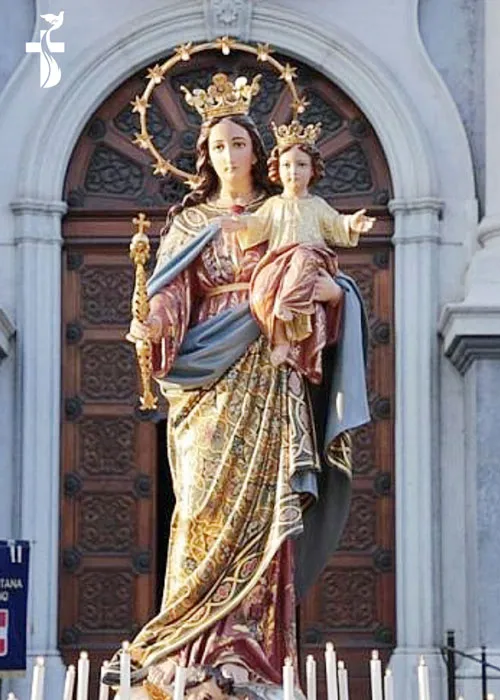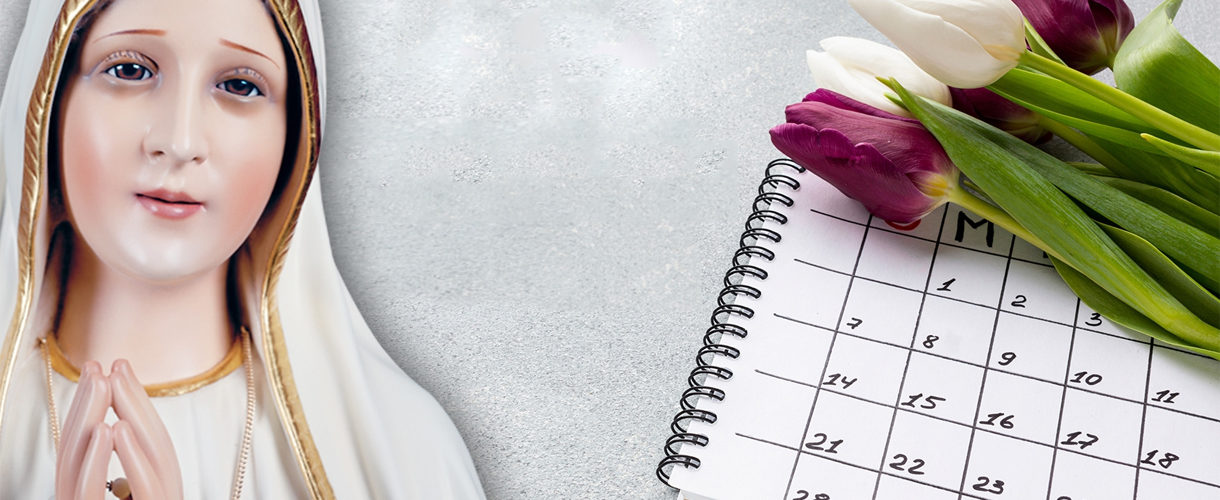
Our Lady Of The Tower
Country :
Year : 1933
Woods Hole is a little seaside town set like a dimple right in the elbow of Cape Cod. To the casual visitor, Woods Hole is like a toy town; it is so quaint. It is so quiet, people seem to walk on tiptoe; children patter softly on bare feet. As I walked around the inlet, suddenly out of the silence two bells began to ring: one high and brittle, the other deep as slow thunder. Looking up I saw a stone tower at the water’s edge; somehow I had not noticed it before, but now it dominated the whole scene; and suddenly I saw that the church was right behind it. The two bells continued their rebuttal, and then I recognized it to be the Angelus Bell; six o’clock and time for supper. Over the supper table, the pastor told me that a lady from Chicago, spending her summer at Woods Hole, had built the tower and donated it to the parish. In 1933 the bishop from Fall River came down on a Sunday afternoon, blessed the bells and dedicated the tower.
The bells were christened Pasteur and Mendel after the two Catholic scientists. The lady’s motive was to remind the scientists that there is another and more valid aspect of life; across the inlet is the Marine Biological Laboratory.
The garden surrounding the tower is small, but like a dream world. A stone statue of Our Lady stood among the flowers, and two small birds with carillions in their gullets, hopped on the crown of the Madonna’s head and sang. The garden teemed with roses, marigolds, campion, fuchsia and blue forget-me-nots; it was intended to be a Marygarden; perhaps the first of its kind in the New World; it was to cater only to such Flowers which bore the name of Mary or suggested some trait or mystery in Our Lady’s life. Foxglove and honeysuckle are Our Lady’s fingers; white campion, Our Lady’s Candles; forget-me-nots, Eyes of Mary; Morning glory, Our Lady’s Mantle; spiderwort, Our Lady’s Tears. Between Shakespeare’s England and today a shameful thing has happened, the flowers have disowned the Mother of God to barter their Baptism for a new name. Here was a war-cry, for a new crusade; to win back for Our Lady the flowers of the field. Would you believe it, there is a list of over 500 flowers named after the Mother of God. The donor of the tower had the list posted, and she looked forward to the day when a gardener would turn up and make it the passion of his life to spread Our Lady’s glories in flowers: Lady’s Lace, Mary’s Pan, Lady’s Cushion, Lady Smock, Lady Comb, Madonna Lily, Lady’s Eardrops, Lady Pins, Lady’s Looking glass. It was like the Litany of Loreto, naming Mary’s flowers. I walked to the end of the garden and entered the tower, a small room, like a hermit’s, with a kneeling bench, miniature stations on the wall, a rack of books, and a table inviting one to sit and read. A sign said you could take home a book, but return it at the end of summer.
Here were the choicest of the classics: St. Augustine, Pascal, Abbot Marmion, Bernard of Clairvaux, Thomas Aquinas, Hillaire Belloc, Chaucer, Gilbert Chesterton, Dante, Maritain, John of the Cross, Paul Claudel, Teresa of Avila. What surprises for those picking up the books; what sparkling glimpses of Christian truth! I was thumbing through the poems of Francis Ledwidge, the Irish peasant poet, when a strange racket sounded in the stone vault. The bells Mendel and Pasteur, were beginning their musical arguments: twelve o’clock noon. The two bells were ringing the Angelus again: the tidings of the Angel to Our Lady; …and reminding the quiet town of Woods Hole and the Marine Biological Laboratories that God had become a man to save us all.
After the Angelus, I hurried out of Mary’s tower, through the Lady-Garden, and back across the street to the church and the rectory, thanking God and Our Lady that such spiritual loveliness and such deep love and devotion to Our Blessed Mother could be found in our United States.



